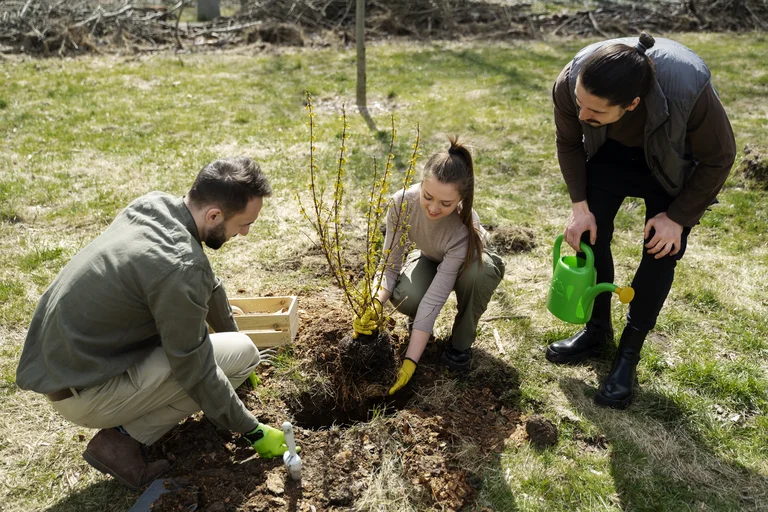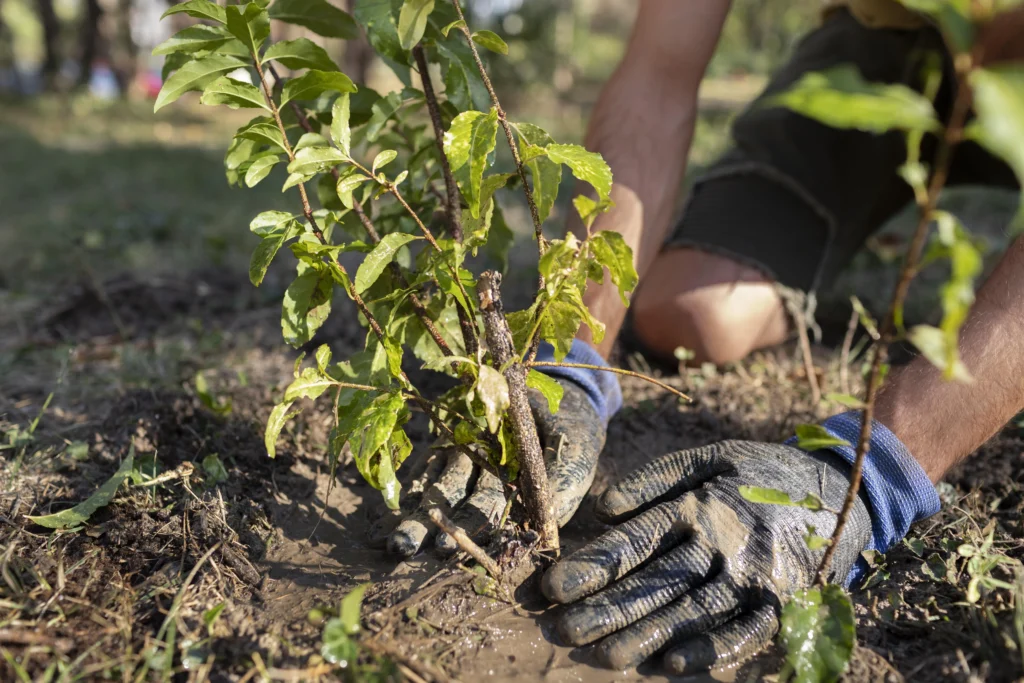
10 Benefits Of Planting Trees For A Greener, Healthier Environment
Consistently, we hear about rising temperatures and environmental challenges. One of the simplest yet most powerful solutions is planting trees. Understanding the benefits of planting trees helps us see how trees improve air quality, reduce pollution, provide shade, and create a healthier, greener environment.
Urban areas, in particular, suffer when trees are replaced with buildings and roads, causing heat buildup and air pollution. By planting trees, we can reduce ground-level pollutants, absorb carbon dioxide, and combat the effects of climate change. Trees are essential not just for the environment, but for human health, well-being, and the overall quality of life.
Benefits Of Planting Trees

Here’s are detailed guide about the ten benefits of planting trees for the environment.
1. Improve Air Quality
Trees naturally clean the air around us. They take in carbon dioxide, nitrous oxide & other harmful gases while giving out oxygen. In cities, this helps reduce pollution, keeps the air cleaner, and supports healthier lungs for everyone. When more trees are planted, the brown haze of ground-level ozone that often hangs over urban areas also decreases noticeably.
Planting trees around homes, schools, and along streets improves air quality, reduces smog, and helps reduce breathing problems. In simple terms, trees provide us with fresh, clean air—a benefit that’s vital for both our health and the environment.
2. Reduce Heat and Provide Natural Cooling
Cities with fewer trees tend to be hotter, a problem known as the “urban heat island” effect. Trees offer shade and help cool streets and neighborhoods, which reduces the need for air conditioning. This saves energy & helps combat climate change by cutting down greenhouse gas emissions from power plants.
Shaded areas under trees also make outdoor spaces more comfortable for walking, playing, and social interaction, enhancing community well-being.
3. Cooling the Urban Heat Island:
Trees absorb carbon dioxide, one of the primary greenhouse gases responsible for global warming. Planting more trees is a natural way to combat climate change, as each tree stores carbon in its leaves, branches, and roots.
Urban tree-planting campaigns, forest restoration projects, and even individual efforts in home gardens all help reduce carbon levels. These actions create a healthier environment and ensure a cleaner future for the coming generations.
4. Reduce Noise Pollution
Trees serve as natural sound barriers, absorbing and blocking noise from traffic, construction, and industrial areas. In busy cities, planting trees strategically along streets and around buildings can greatly reduce noise pollution, making the surroundings calmer and more peaceful for residents.
This environmental benefit also improves mental health by lowering stress and creating more tranquil spaces for relaxation.
5. Improve Water Quality and Prevent Soil Erosion
Tree roots absorb rainwater and reduce runoff, which helps prevent flooding and maintain groundwater levels. They also keep the soil in place, preventing erosion and keeping rivers and lakes cleaner.
Forests and urban tree belts work as natural water filters, providing cleaner and safer water for communities. By planting trees, we protect both land and water resources, helping to improve the overall health of the environment.
6. Provide Habitat for Wildlife
Trees are essential for biodiversity. They provide food, shelter, and breeding grounds for birds, insects, and other animals. Planting trees in urban and rural areas helps maintain ecological balance and supports local ecosystems.
Biodiversity is closely linked to environmental health, and every tree planted contributes to a greener, more sustainable ecosystem.
7. Reduce Stress and Improve Mental Health
Studies show that green spaces and trees reduce stress, anxiety, and depression. Walking under tree canopies, hearing rustling leaves, or spending time in shaded parks has a calming effect on the mind.
Planting trees is not just an environmental act—it’s a health and wellness investment, enhancing community happiness and personal well-being.
8. Protect Against Harmful UV Rays
One of the key benefits of planting trees is their ability to block harmful UV rays. Trees provide shade that can filter up to 90% of ultraviolet radiation, protecting people from skin damage and heat exposure.
By planting trees near homes, schools, and parks, we create safer spaces for outdoor activities. This natural protection helps reduce health risks, cools the environment, and supports a greener, healthier environment for everyone.
9. Increase Property Value and Beautify Communities
Planting trees not only improves air quality but also boosts property value. Homes surrounded by greenery and mature trees are more attractive to buyers and can increase real estate value by up to 15%.
Trees beautify neighborhoods, offer privacy, and create calm, peaceful surroundings. These simple environmental efforts make communities cleaner, healthier, and more welcoming places to live.
10. Support Sustainable Practices
Another major benefit of planting trees is their role in promoting sustainable living. Trees absorb carbon dioxide, conserve water, and support biodiversity—all essential for a balanced ecosystem.
Planting more trees encourages eco-friendly habits, from recycling to green construction. It’s a simple yet powerful step toward building a sustainable and greener environment for future generations.
The benefits of planting trees extend far beyond aesthetics. They improve air and water quality, reduce heat and noise pollution, combat climate change, support wildlife, enhance mental health, and create healthier communities.
Whether adding one tree to your garden, participating in urban tree planting programs, or supporting reforestation projects, every effort counts. By planting trees, we take meaningful action toward a greener, healthier environment—for ourselves, our communities, and future generations.
Read more related articles> https://www.climatechallange.com/10-worst-trees-to-avoid-planting-in-your-yard/
FAQS
Q1. Why is planting trees important for the environment?
Ans. Planting trees helps clean the air by reducing pollution and absorbing carbon dioxide, a major greenhouse gas. They release oxygen, cool city areas, and prevent soil erosion. Trees also safeguard wildlife habitats, making the planet healthier and more balanced for all living beings.
Q2. What are the long-term benefits of planting trees?
Ans. Over time, trees improve soil fertility and help guard against flooding and drought. They regulate the local climate and boost biodiversity. Additionally, properties surrounded by trees tend to have higher value and encourage sustainable, green living.
Q3. How can individuals help increase tree cover?
Ans. People can plant native trees in their yards or take part in community tree-planting events. Supporting reforestation programs is another impactful step. Even small actions, like planting a single tree, help create a greener and healthier environment for the future.
Your writing feels like it’s opening a window into a world I didn’t know I needed to see.